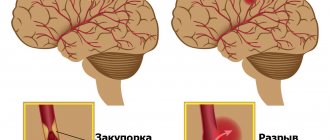Tearfulness is a common occurrence for the fairer sex. But in some cases, its excessive manifestation indicates problems with the central nervous system, hormones and problems in the vegetative-vascular system. Of course, a woman’s resentment should come out in the form of tears, but if tearfulness is not caused by anything, you should seek help from a specialist.
Tears are a normal reaction of the human body under stress. The necessary reflex appears in childhood and does not go away throughout life.
Every person needs emotional release, so there is nothing terrifying about moderate tearfulness. Tears help relieve mental pain and nervous tension.
However, they are not always rare and short-lived. It is important to identify the causes of excessive tearfulness and take measures to eliminate it.
Causes of the condition
If we consider tearfulness, the reasons can be physiological and pathological. The first group includes those that are not associated with diseases. Sometimes behind tearfulness lies increased emotionality and sensitivity. Often this feature is noticeable already from childhood. In this case, you can only learn to restrain your emotions when necessary. Psychologists help with this.
Physiological characteristics include the appearance of tearfulness in adolescence and during menopause. This is due to changes in hormonal levels. Once it stabilizes, the symptoms will go away. In the case of menopause, the doctor may prescribe medications that help control hormonal levels and mood.
Two main causes of tearfulness: inadequate reaction of the nervous system or unstable hormonal levels.
They can develop against the background of diseases of the endocrine system or mental disorders.
Psychological problems
A woman’s life without the presence of certain stressful situations in our modern world is almost impossible. A woman bears a strong responsibility for children and family, often worries about her loved ones and is more susceptible to stress than a man.
As numerous studies show, a woman is more sensitive to the emotions of people around her and is often emotionally unstable herself.
Depression and attacks of despair cause increased tearfulness, nervous breakdowns, and hysterics. The accumulation of negative emotions often becomes the cause of a woman’s mental imbalance. If difficulties at work are added to problems in the family, then it is very difficult for a woman to resist external blows of fate.
Severe forms of neurosis and insomnia develop, which has an extremely negative impact on well-being.
Tearfulness syndrome is a mental disorder. The degree of the disorder depends on the severity of the symptoms of the syndrome. The cause of the disease may be hormonal surges, internal diseases, etc.
Tearfulness syndrome has haunted a person since early childhood. There is a certain increasing scale indicating the peaks of possible tearfulness and touchiness in children, this is from 2 to 6 years and adolescence.
Another reason for the desire to constantly cry is intrapersonal conflict. In this case, the patient experiences causeless aggression, a prolonged increase in body temperature (for several weeks) and an exacerbation of chronic diseases.
Most often, intrapersonal conflict, which provokes excessive tearfulness, appears among women in leadership positions. This is explained by the fact that a woman has to choose or be torn between home and a successful career.
Interesting fact about tears:
Crying is mainly associated with negative emotions such as grief and sadness. However, people cry at weddings and even when they win an Olympic gold medal. It turns out that the brain can't differentiate between negative and positive emotions when it comes to turning on waterworks.
The hypothalamus, an area the size of an almond, simply responds to an overwhelming flow of emotions. He cannot detect the stress or joy behind the flood.
Any one of them is simply a powerful signal from the amygdala, our emotional register. Once the hypothalamus receives the signal, it activates the autonomic nervous system. The gold medalist and the guy who lost the race cry for different reasons, but surprisingly, their brain's dominoes fall in the same order.
Hormonal changes
However, not only psychological factors can be the causes of tearfulness. Nervousness and tears often accompany PMS. Before menstruation, female hormonal levels begin to change. If the body stops producing the hormones necessary for ovulation, menopause occurs.
The female body, like the male body, ages. It's unavoidable. The level of hormones in the body decreases, which can lead to deep, prolonged depression and tearfulness.
But even young women are often prone to tears due to unstable hormone production. Hormonal changes can make a woman cry for no apparent reason. The state of melancholy and tearfulness can last 3-14 days due to hormonal changes in the body.
Possible diseases
Among the pathologies in which tearfulness occurs, the main one is mental disorders. These include depression and neuroses. In this condition, the nervous system is in a state of increased excitability, and therefore often responds inadequately to external stimuli.
Exhaustion of the nervous system is also manifested by tearfulness. This condition is called “astheno-neurotic syndrome.” It requires observation and treatment together with a doctor.
Hormonal imbalance can also affect the emotional sphere. Therefore, endocrine pathologies can cause tearfulness. Hypothyroidism and diseases of the female reproductive system are more common causes than other diseases.
In some cases, emotional instability is caused by a vitamin or mineral deficiency. These conditions include hypovitaminosis D, iron deficiency and B12 deficiency anemia.
When is it okay to cry?
For most women, it is quite normal to cry frequently. And a person’s temperament plays a big role in this. And if for others the current situation does not mean anything serious, then for ladies with a special temperament any action, word, or event causes a whole waterfall. Therefore, it makes sense to study the four main types of people - choleric, sanguine, melancholic and phlegmatic.
Cholerics are passionate, sometimes not entirely balanced people. They can laugh, have fun, and a moment later burst into bitter tears. They have a special temperament in which passions rage and there is no calm. They often fall into depression and from any prank, jokes can make them cry, begin to suffer, or even fall into deep depression.
Sanguine people are hot, passionate, lively people who also experience frequent mood swings. But they do not suffer from the vicissitudes of fate and can withstand challenges. Yes, sometimes they can surrender to their suffering and cry. But most often they try to hold on until the end and not show problems.
Phlegmatic people are the golden mean, the best type of human temperament. People of this type have a persistent, balanced, calm and inexcitable character. They are stable and never become depressed or hysterical without good reason. But even in the most difficult moments, they are able to control themselves and not give free rein to their emotions.
Melancholic people are the most unbalanced type of people. It is they who are susceptible to tears and for any reason, or even for no reason, can roar like a “beluga”. These are very difficult people, it is difficult to build harmonious relationships with them, since they do not enjoy the present, do not think about a good future, but constantly live in the negative past.
And even if their past life was calm, such people still rummage through their memories and look for negativity. They are the ones who can most often be found with their eyes wet from tears, and any conversation that is raised in a positive tone ends in tears and the dissatisfaction of a melancholic person.
In addition to the fact that melancholic people can be classified as tearful, you should pay attention to such things as a genetic predisposition to a sad mood.
Everyone around women treats women’s tears with understanding, but when the moment goes beyond all boundaries, it is quite natural that irritability and anger sets in at the one who constantly lets out “snot.” If you don’t control your own emotions, you can completely “soften” and turn into a “hired mourner” who is despondent even if there is no reason to cry.
Diagnostics
An examination by a doctor and a blood test for certain indicators will help determine the cause. It is worth contacting a neurologist to exclude astheno-neurotic syndrome. If it is not confirmed, it is recommended to get tested and visit an endocrinologist with the results.
Read also: Premenstrual syndrome in women
List of examinations:
- complete blood count to assess hemoglobin concentration;
- determination of the level of vitamins D and B12;
- assessment of the amount of free T3 and T4, TSH;
- determination of the concentration of sex hormones;
- ferritin content in the blood.
If no abnormalities are found in the analyses, it is recommended to visit a psychotherapist. Using tests, he will determine the likelihood of neurosis or depression. The test results should also be shown to the doctor.
Possible consequences and complications
Tearfulness in women, the causes and symptoms of which are important to identify at the early stages of the disease, can lead to complications and negative consequences.
At advanced stages of deviations that cause tearfulness, a woman can:
- harm other people;
- lose the ability to feel like a whole person;
- suffer from constant memory loss, forget most of the events that happened;
- use psychoactive substances;
- suffer from severe attacks of derealization and depersonalization;
- attempt suicide.
Tearfulness in women can be a dangerous symptom of a somatic or mental disorder, therefore, for timely treatment, it is necessary to consult a specialist to determine the causes of tearfulness and prescribe effective and comprehensive therapy.
Treatment
The treatment plan depends on the results of the examination. If a person is healthy, it is recommended that he visit a psychologist to learn how to control emotions. If pathologies are present, treatment is carried out by a specialized specialist.
Treatment options:
- taking hormone replacement drugs in the presence of endocrine disorders;
- correction of vitamin D or B12 deficiency;
- psychotherapy and antidepressants for depression;
- sedatives for astheno-neurotic syndrome;
- tranquilizers for neurosis;
- Iron supplements for iron deficiency anemia.
To live a full life, a person needs to control his emotions and internal state. It is better to solve the problem of increased tearfulness before it causes serious damage in all areas of life.
Dear patients! Remember that only a qualified doctor can make an accurate diagnosis, determine the causes and nature of the disease, and prescribe effective treatment. You can make an appointment with our specialists or call a doctor at home by calling 8-(4822)-33-00-33
Be healthy and happy!
What are tears
Human tearfulness is a special mental and emotional state that accompanies every person. We all naturally have protective reflexes. We are all familiar with them from the first day of his birth - breathing, sneezing, coughing, eating, drinking and others. Crying is also a must among them. As soon as a person is born, he takes his first breath and... cries. Some people scream so hard their ears are blocked. And so through life, I hit myself, cut myself, was offended - immediately tears. But it cannot be considered normal if a person cries for absolutely no reason. But first, let's find out why women cry?
Dependence of the problem on the type of nervous system
CONTENT:
All factors leading to increased tearfulness can be divided into 2 groups. The first group includes long-term psychotraumatic conditions, which gradually layer on top of each other, that is, they have a cumulative nature. Women in this category constantly experience despondency, depression, and loss of vital interests. The reasons for this may be:
- protracted family and work conflicts;
- chronic or incurable diseases;
- unsettledness or uncertainty in personal life;
- constant mental or physical stress;
- difficult financial situation;
- prolonged grief for a loved one.
Added to all this is increased sensitivity, a sense of injustice, and increased vulnerability. Such internal tension seeks and finds a way out in constant tearfulness for any minor reason.
The second group consists of women who are quite prosperous, but prone to dramatize every life situation. They are easily excitable, emotionally unstable, prone to hysteria and theatricalization of emotions.
Their tears are not a consequence of soul-searching and depression, but a reaction to some momentary irritant: harsh criticism, disobedience of a child, refusal to fulfill a request, and others. Constant tearfulness in most cases is manipulative in nature and is a means of attracting attention.
As can be seen from the examples, the condition is caused in one case by depression of the nervous system, apathy and depression, in the other – on the contrary, by increased excitability. It is undesirable to ignore such manifestations, since they may hide quite serious physiological or psychological problems.
general characteristics
Crying is a psychophysiological reaction that is accompanied by the release of tears, a sharp change in the rhythm of breathing, blood pressure and heartbeat, and involuntary contraction of the superciliary and periocular muscles.
In origin, it is a strong one-time mental experience that occurs in response to intense negative or positive stimuli. From a social point of view, crying is a way of expressing strong emotions. In childhood, physical pain is a common cause of tears. As you get older, this reaction weakens, but can persist in women with increased emotional lability. The term “tearfulness” refers to a character trait or temporary feature of the emotional-volitional sphere. It manifests itself as emotional imbalance, tearfulness: a person cries every day, the tears are caused by random memories, a tense conversation, the unpleasant intonation of the interlocutor, a scene from a movie. Often, tearfulness reduces social activity, interferes with maintaining close relationships, and provokes irritability and misunderstanding on the part of others.
Tearfulness is more common in women and children than in men. This is explained by biological reasons: women have more pronounced hormonal fluctuations (pregnancy, childbirth, menstrual cycle), children have a labile nervous system, so they easily become agitated even to minor stimuli. The cultural factor also influences increased tearfulness in women compared to men. Sensitivity and tearfulness are recognized as feminine traits, while men's tears are seen as a demonstration of weakness.
Prerequisites for the development of depression in osteochondrosis
What to do if there are no pain symptoms, and your mood is always “below the baseboards”? Remember that there is no reason for anxiety; you should consult a doctor if:
- no interest in hobbies, close people have become annoying;
- panic attacks occur, sleep is disturbed;
- Periodically, for no apparent reason, the heart rate increases greatly. For example, you wake up from this at night;
- the habit of “digging into oneself” and looking for shortcomings appeared;
- sexual desire has disappeared;
- there is a loss of strength, physical inhibition;
- disturbance of the emotional background is observed for more than 2-3 months.
How to determine if you are at risk
Osteochondrosis can develop at almost any age, even at a young age, in any person. In 90% of cases it is caused by:
- decreased motor activity;
- sedentary work;
- insufficient fortification;
- working in a position that is uncomfortable for the neck;
- reducing the number of walks in the fresh air;
- presence of bad habits (alcohol, smoking);
If at least one of the facts is about you, then do not be surprised at the appearance of a bad mood and decreased self-esteem; most likely such symptoms are caused by osteochondrosis. In a depressed state, it is difficult to believe in the effectiveness of treatment, but leaving the disease to its own devices is contraindicated. First, find the strength to go to a neurologist so that you don’t have to subsequently treat a “bouquet” of pathologies of various types.
In this article we tried to answer your questions:
- What is the relationship between depression and osteochondrosis?
Why does a pregnant woman want to cry?
Emotional instability is especially pronounced in the first trimester, when the body is being rebuilt. This period is also characterized by anxiety, fatigue, and mood swings associated with hormonal surges. Tearfulness for a pregnant woman is an effective way to get rid of accumulated negative emotions. However, if crying too often turns into hysterics, you should consult a doctor: the mental health of the expectant mother is no less important than her physical condition.
When to cry
Life is a black and white stripe. It happens that there is simply no end to the black one and, of course, any person becomes depressed. And no matter what he does, nothing contributes to solving the problems. We also often suffer from the fact that we are seeing off people close and dear to us to another world. At such moments, we give up and the only thing we can afford is to cry. And it is right!
Experts say that tears are one of the methods of reducing stress, the pain threshold of our psyche. Thus, the body protects against a mental breakdown, otherwise terrible grief would lead to everyone without exception going crazy (we are talking about people with a normal psyche).
Amino acid deficiency
Amino acids are the building blocks of proteins, including the neurotransmitters responsible for transmitting nerve impulses in the brain. With an imbalance of amino acids, sleep disturbances, mood swings, and a lowered pain threshold often occur—even with minimal exposure, the pain is perceived as very acute.
A lack of tryptophan, a precursor of serotonin (“the hormone of joy”), provokes a depressive state, and a deficiency of tyrosine or phenylalanine is fraught with severe mood swings.
Amino acid testing is performed as part of any metabolic evaluation, including chronic conditions with unclear diagnosis and/or difficult to treat.
Amino acids in the blood, 12 indicators (test code 99-10-112).
Tearfulness in women - reasons
The reasons for crying will be:
- Resentment;
- Misfortune;
- Poor mood;
- Stress;
- Lack of sleep;
- Happiness or joy;
- Watching a movie;
- Overwork;
- Criticism or praise from the boss;
- Increased interest from outsiders.
If tearfulness recently occurs more and more often and for unexplained reasons, then this indicates various ailments in the body. Due to constant crying, mental health suffers, because with tears comes anger, nervousness, and lethargy.
Find the answer
Are you having any problem? Enter “Symptom” or “Name of the disease” into the form, press Enter and you will find out all the treatment for this problem or disease.
If short tears awaken the intention of calming others, then continuous tears give them a feeling of fatigue and irritation.
Exercises to lift your mood
At home, without good reason, tearfulness can be dealt with using a simple exercise. Go to the mirror and stretch your lips as if you are smiling a lot. Even if there are no incentives for joy, make a grimace and hold your lips in this state for 2-3 minutes. According to scientists, we activate points that affect the production of joy hormones. And laughter after an artificial grimace will arise on its own and be natural. The body will be filled with a feeling of goodness, joy, and maybe even fun.
As soon as tears come, you can do a breathing exercise. You should breathe often, but not deeply. Thus, attention is focused on the state of the body. It is important not to take deep breaths, otherwise you may feel dizzy. Repeat until the moment of tearfulness passes. Before breathing, you should drink a glass of cool water (clean, still).
Fighting tearfulness with folk remedies
This problem can only be dealt with using folk methods if the remedies are in addition to the doctor’s prescriptions or the tearfulness is not caused by serious pathologies in the body. Infusions and decoctions of soothing herbs are used: mint, chamomile, calendula.
- Pour boiling water over 2 tablespoons of dry chamomile and cook in a water bath for 15 minutes. Leave for another half hour, strain through gauze and add 2 tablespoons of the broth to boiled water. Drink three times a day and be sure to drink half an hour before bedtime.
- Steam calendula (a tablespoon) with boiling water, leave in a water bath for 15 minutes, add a tablespoon of decoction to the boiled water. Drink half a glass before bed.
- Mint and lemon balm leaves can be added to regular tea and lemonade.
Why you want to cry for no reason: what does this mean in psychology
Tears are a subconscious reaction that brings people together. Let's consider tearfulness as a tool for interpersonal interaction, a way to attract attention and give a certain signal to society. Crying tells society that there is a problem that a person cannot solve without help. It evokes the sympathy that the crying person needs. A more categorical theory says that lacrimation is a method of manipulation and a means of neutralizing the aggression of the interlocutor. We learn this science from childhood: adults always react to the sobs of a child.
Why I often want to cry for no reason: vulnerability
Many people, being vulnerable, cling to individual phrases and words, associatively connect them with past experiences, draw conclusions and worry about them. In this case, the source of uncontrollable tears is self-doubt and low self-esteem, which makes it difficult to objectively perceive criticism. In psychology there is such a thing as temperament. It is a set of innate characteristics that can be used to classify people into four personality types. Melancholic people are most prone to tearfulness, depression and resentment. By nature, they are quite impressionable, so they experience both positive and negative emotions very violently.










